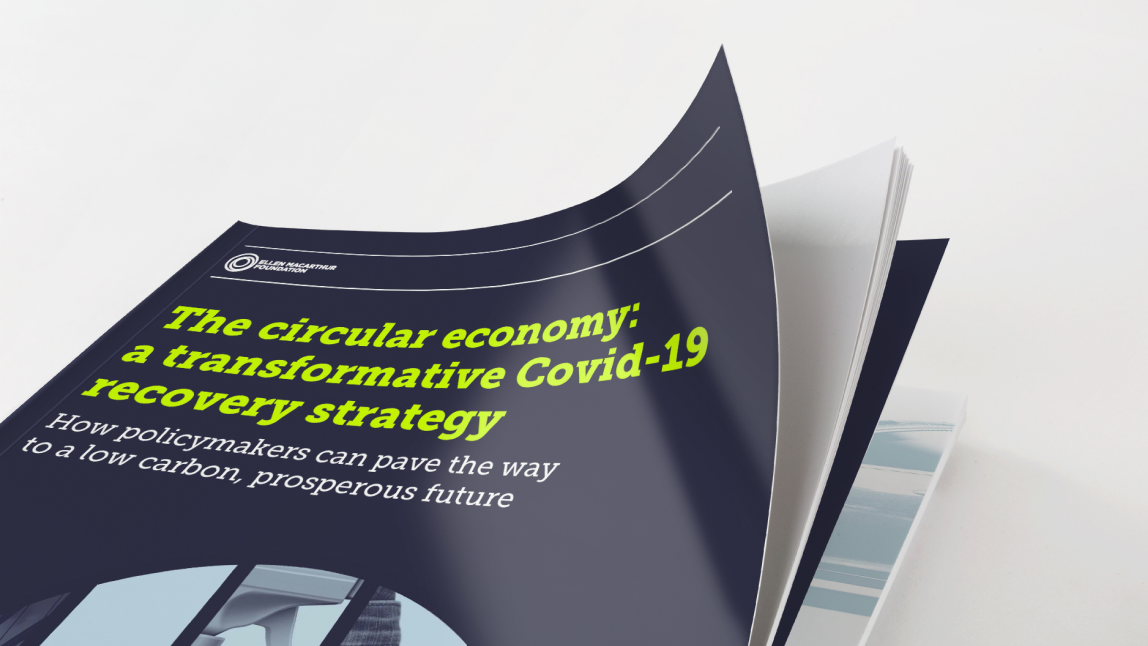Fostering collaboration to obtain system-level solutions
A global crisis requires international and well-coordinated recovery efforts. The Covid-19 pandemic has affected us all to varying degrees and an international coordinated response will be of vital importance. Strong public–private collaboration will be essential in the shaping of a post-pandemic future that ushers in redefined growth towards a next wave of prosperity, while also improving society’s resilience to future shocks. Such a transition, enabled through a circular economycircular economyA systems solution framework that tackles global challenges like climate change, biodiversity loss, waste, and pollution. It is based on three principles, driven by design: eliminate waste and pollution, circulate products and materials (at their highest value), and regenerate nature., will, for example, require collaboration between governments, the investment community, industries, companies, academia, and civic organisations. The value of such international coordination was demonstrated before the pandemic by the Fourth United Nations Environment Assembly (UNEA-4), which in 2019 focused a session on ‘Innovative solutions for environmental challenges and sustainable consumption and production’. The conference brought together five heads of state and government, 157 ministers and deputy ministers, and almost 5,000 participants from 179 countries, which led to a Ministerial Declaration and 26 thematic resolutions on topics such as: sustainable consumption and production (SCP); resource efficiency, chemicals, and waste; biodiversity and ecosystems; environmental governance.
"As we move towards recovery from Covid-19, we must embrace the future and not postpone the inevitable by hanging on to the past. [...] By leveraging all the knowledge, power, and influence, we have to push forward on these priorities, we can build a circular economy. It will take deep collaboration between business, government, and civil society, but the rewards will be well worth it; a stronger ecosystem that will be resilient for the decades to come, and a world where people and nature can live together in harmony." - Naoko Ishii and Frans van Houten, co-chairs of the Platform for Accelerating the Circular Economy
An integrated and collaborative approach is needed for tackling global systemic challenges. As expressed by the Institute of Advanced Sustainability Studies, “the governance of systemic risks, and of pandemics in particular, is a genuinely interdisciplinary undertaking”. However, the siloed way of working is quite ingrained within many political systems and in the way in which societal challenges are being tackled. As an example, a study has emphasised how policies—that were pursued during the 2007–2009 financial crisis and the subsequent European debt crises that peaked in 2011–2012 —failed to achieve the integrated objectives that were set, due to policymakers addressing priorities, like employment and growth, in isolation. With regards to overcoming the impacts of the Covid-19 pandemic with the circular economy, similar concerns exist. Namely, the risk remains high that circular economy strategies are being narrowed down to waste management policies, while sitting in isolation from the rest of economic policymaking. Instead, an integrative and collaborative approach is needed to help manage system-level challenges that are transboundary by nature. This will require working with cross-cutting thematic teams or departments, bringing a new lens, and helping unearth new solutions that meet multiple policy objectives. The circular economy should, for example, be mainstreamed into interconnected policy areas (such as construction, transport, and urban planning policies) and thematic strategies (such as industrial renewal, climate change, resilience, and nature-based solutions), helping reinforce synergies that can address key priorities such as employment, growth, and decarbonisation. This can support the emergence of a common vision, and enable the transition benefitting from the expertise and leadership of different actors.
As economies recover from the pandemic, inevitably reshaping global trade and value chains, integrating circular economy practices into trade policies will be a key area for future engagement. Transitioning to a more circular economy will inevitably have implications on a global scale. However, to ensure circular economy practices are integrated into trade policies, improved policy coherence will be needed. According to the Institute for European Environmental Policy, this could include: the better harmonisation of recovery programmes; standardising definitions and standards; reviewing regulatory systems; improving the integration of the circular economy into EU trade policy and free trade agreements; championing trade incentives for circular economy goods; and increasing cooperation between countries.
The circular economy offers a ‘systems approach’ to economic development that is critical for stimulating collaboration, enabling innovation, and building resilience for a post-Covid-19 future. It often involves stakeholders from across the entire value chain and collaboration to help rethink the way in which products are made and used. As discussed in the paragraphs above, global challenges are too complex to be approached with isolated efforts. When it comes to complex challenges around materials streams like plastics, textiles, or food, high levels of commitment, and incentives and actions at pre-competitive level are needed from those with a stake in the way materials cycle in the economy. For example, the —created by the Ellen MacArthur Foundation’s Make Fashion Circular initiative—brought together more than 40 experts from academia, brands, retailers, manufacturers, collectors, sorters, and NGOs to co-develop guidelines for circular jeans.
Such opportunities do not only exist for specific product supply chains but also for industries as a whole, which encompass an even wider system of actors. In this respect, ambitious strategies and collaboration platforms play key roles in setting the direction of travel and enabling co-creation, innovation, knowledge exchange, and alignment. As an example, in its proposal for A New Industrial Strategy for Europe, the European Commission has acknowledged that policymakers need to look closely at the opportunities and challenges facing industrial ecosystems. These ecosystems encompass all players operating in a value chain, each having their own specific expertise, and bringing different research and innovation skills. In light of this, the Commission has expressed being ready to co-design and co-create solutions with the industry itself, as well as with societal partners and all other stakeholders in order to ensure the industry can successfully lead the ecological and digital transitions and drive competitiveness. The European Battery Alliance is another good example of system-level collaboration, bringing together more than 120 European and non-European stakeholders representing the entire battery value chain. It has made the EU an industrial frontrunner in this key technology. Moreover, alliances can also help steer work and aid the financing of large-scale projects with positive spill-over effects across Europe, using the knowledge of SMEs, big companies, researchers, and regional actors to help remove barriers to innovation and improve policy coherence.
Building circular economy knowledge and capacity will be essential to help to accelerate the transition for a lasting recovery. As a part of this,sharing learnings and best practices from the implementation of recovery programmes among key actors and regions will be critical to ensure the goals of the recovery are effectively reached across the globe. For example, the United Nations Economic Commission for Europe (UNECE) is mobilising experts—from their network of eight International Public–Private Partnership (PPP) Specialist Centres—to develop knowledge and guidance on PPPs to help build back stronger from the Covid-19 pandemic. Together there is an opportunity to rebuild confidence, demonstrate a clear and unambiguous way ahead, and pave the way towards a better and more resilient future. As seen in the built environment where disruptive technologies—that enable circular practices, such as durable and flexible design, and industrialised processes of construction—could be applied to greater degree if the capabilities and skills necessary to do so were made available throughout the industry.













